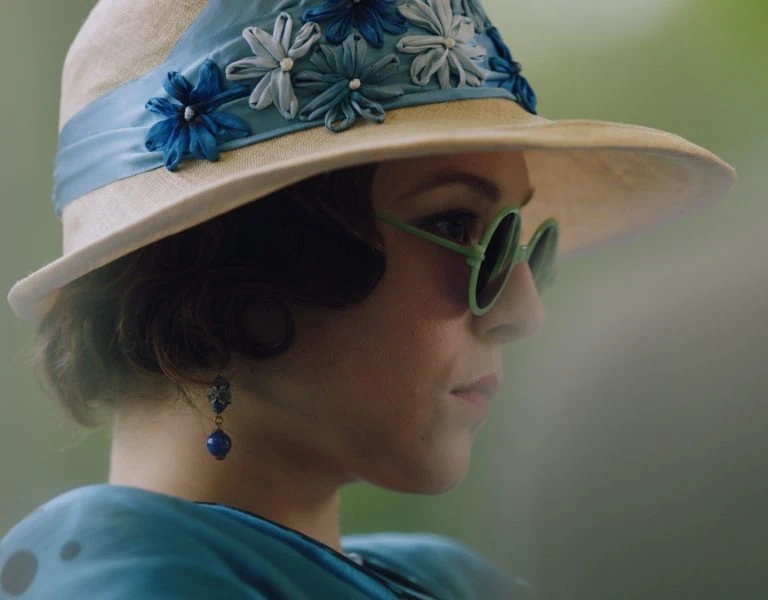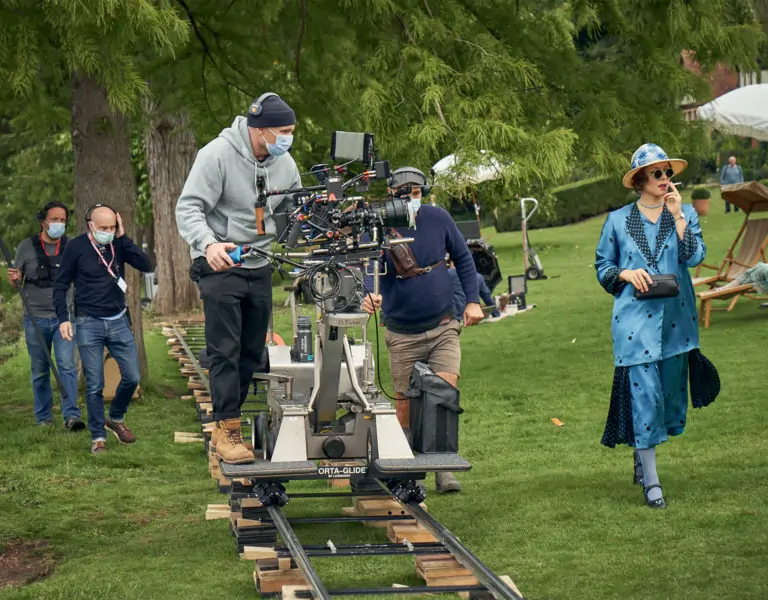THE SHOW MUST GO ON
Shooting in the precious setting of London’s Freemasons’ Hall added an extra layer of complexity for See How They Run’s cinematographer Jamie D. Ramsay SASC and gaffer Carolina Schmidtholstein. The duo discusses the intricacies of lighting the historic venue while juggling capturing an ensemble cast.
It’s 1950s’ London and we join the characters at a soirée celebrating the 100th performance of the Agatha Christie play The Mousetrap. It’s a scene which establishes all the main characters in that classic cinematic way – then, at the end of the party, one of the main antagonists is killed.
Anyone who’s been to the Freemasons’ Hall in Central London, where we filmed, knows it’s a crypt of a place, with high ceilings and huge marble walls and floors.
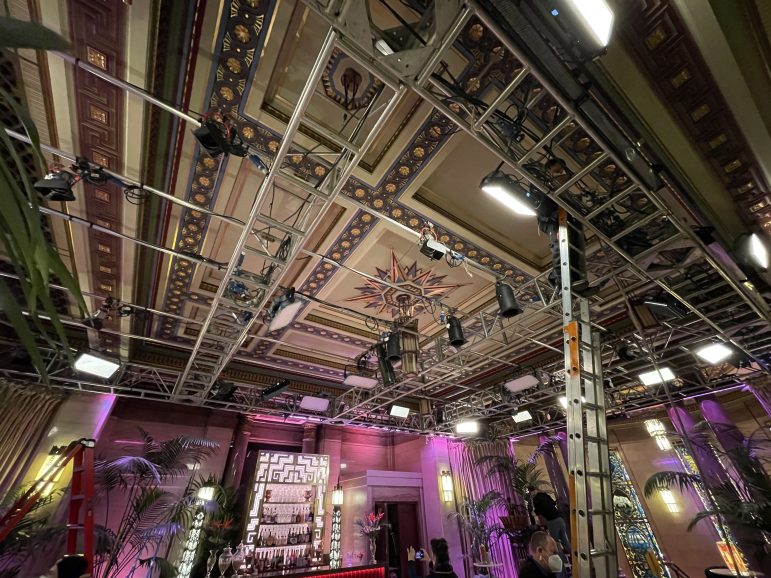
It’s like being in a studio in the sense that you have to start from scratch.
One of our main technical issues going into the Hall was that there was no lighting, nor was there anywhere to put lights. Knowing we were to shoot 360 degrees, there would be nowhere to hide lights and no rigging points in the ceiling which meant everything had to be built into place.
Amanda [McArthur], our production designer, had a feel for how she wanted the party scene to look. She wanted an inherent tiffany pink hue to surround it, and we wanted to strike a balance between a high key opulent setting and the mood of a noir ‘50s party. I sat down with my gaffer, Carolina Schmidtholstein, and we asked to ourselves, how to achieve this?

Marble is not a very absorbent material (in fact, it’s highly reflective) so it’s not like you’re blanket-lighting a matte metal. It’s a very tricky thing to light! So, what we had to do was look at how to build in a structure that production design could work around and go from there. It meant bringing in a rigging team, along with surveyors who tested the weight-bearing of the Hall’s old marble. Then, we built a rib cage that mimicked the structural pillars of the Hall, and then lifted a technical cage that was as close to the ceiling as possible that we could light from.
To achieve the pink hue that Amanda wanted, we used Pixel Battens to create the broad-based pink tint that washed the walls. Inside the frame, we used SkyPanels and Geminis with different levels of softness on them to key light the characters, along with tungsten Fresnels to create a room light.
See How They Run was shot on the Alexa Mini LF with DNA primes. In pre-production, when Tom George, our director, and I were deciding what aspect ratio to use to frame the filming, we leant towards the idea that this is a film about the theatre and thought about the sort of ratio that would absorb the stage. We opted for 1.66:1, which doesn’t help us from a lighting perspective because the higher the ratio, the trickier it is to hide lights in the ceiling, as in the Freemasons’ Hall.
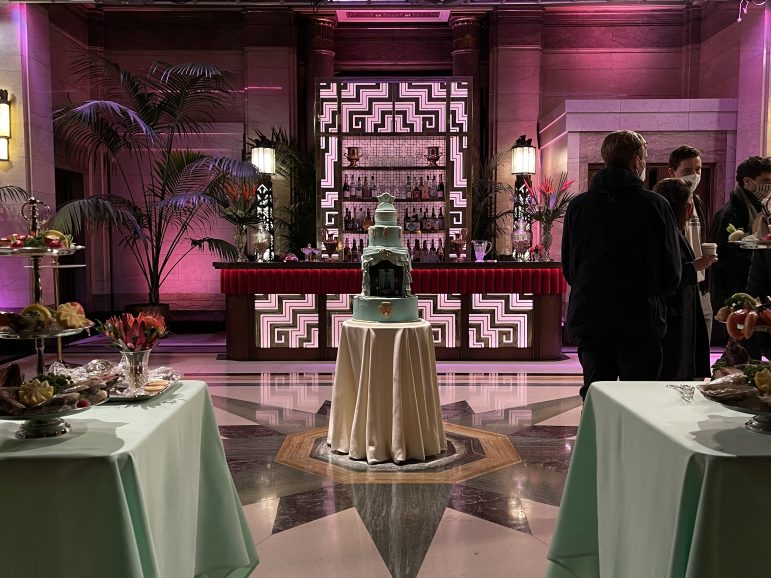
Another thing we had to think about was that, given the film’s ensemble cast, a lot of coverage would be needed. I hadn’t worked with Tom before, but I’d studied his work and saw it was heavily performance-based and more vérité in its style. Looking at our schedule, I knew we had to pre-light in such a way that we could shoot in any direction, at any point in time, with minimal effort and time put into changing the lighting, which Carolina will explain.
We also relied heavily on LED technology as it allowed us immediate control of level and colour as well as seem less dimmer control handled by Andy Furby, our dimmer operator.
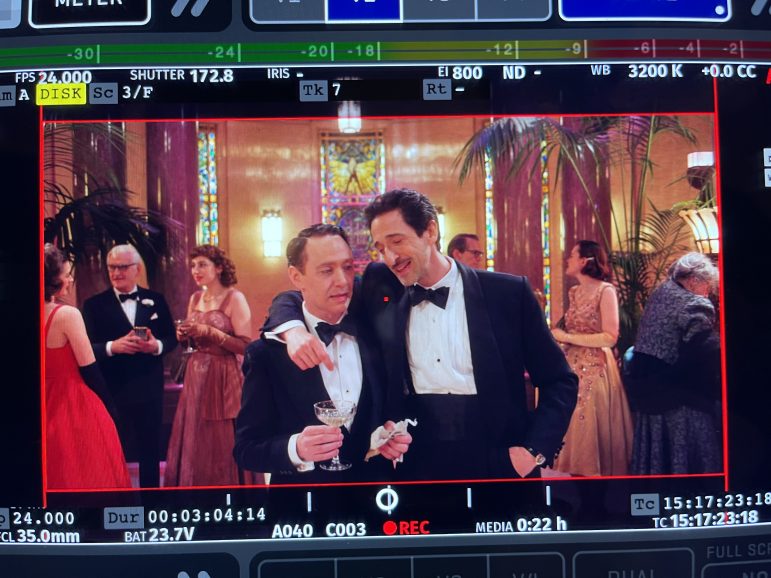
Shooting an ensemble cast introduces a really interesting dynamic as it brings a lot of performers who are main characters in their own right – there isn’t that hierarchy of lead and supporting character. So, reading body language and the nuances of EQ were very important when working with both cast and crew.
The three-way relationship between Carolina, our desk operator Andy and I was invaluable in shaping my filmmaking. Without them, it would have been a completely different experience.
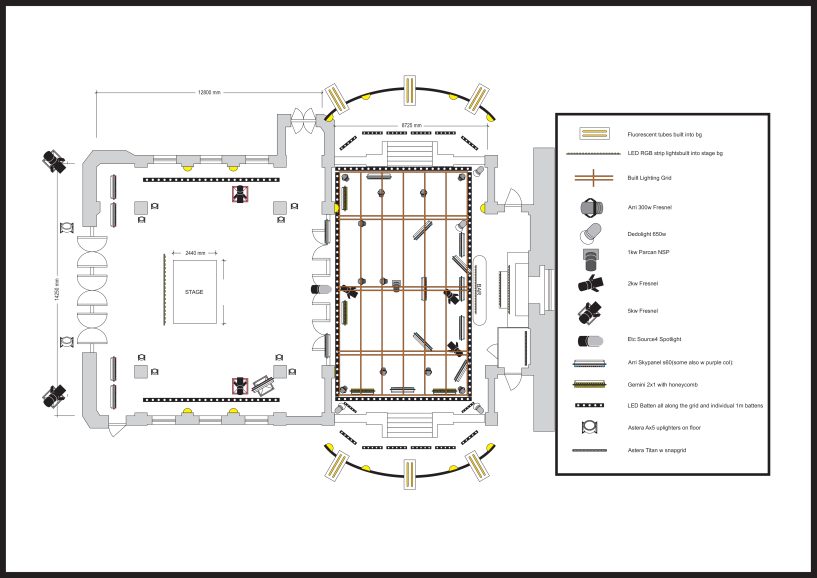
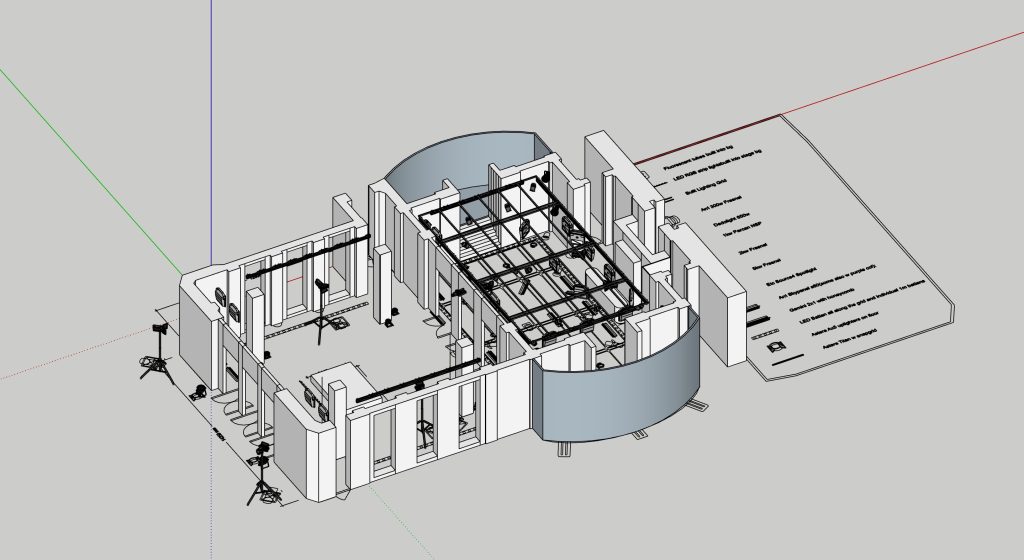
Gaffer Carolina Schmidtholstein’s view
The director wanted the freedom to cover everything at very short notice, so we were able to respond by having an array of lights that we could switch on and off as needed. It was a very sophisticated system: we had a tablet wireless remote controller to the light desk and our desk operator, Andy, was able to connect the iPad to the desk, but the beauty was that Andy was mainly able to stand with us by the monitor.
Doing the trussing was an interesting experience. We had our rigging gaffer, Warren Ewen, who did a great job of making things to our specifications. His expertise in Freemasons’ Hall was invaluable. You had to be really careful with the rig because you’re not allowed to touch anything, it’s so precious.

Filming during COVID meant we were able to work in some empty West End theatres. It was really nice to be able to mix our team with the theatre sparks. We had one radio communication system to talk to the theatre team, and one to talk to our own team, and we had to employ all the tools we had to make the auditorium good for filming – both the stage and the audience.
Occasionally, wearing the masks meant it was a challenge to get all the nuances of communication across. But it was a pleasure to work with Jamie, who was a great communicator and created a nice, jolly atmosphere on set.


